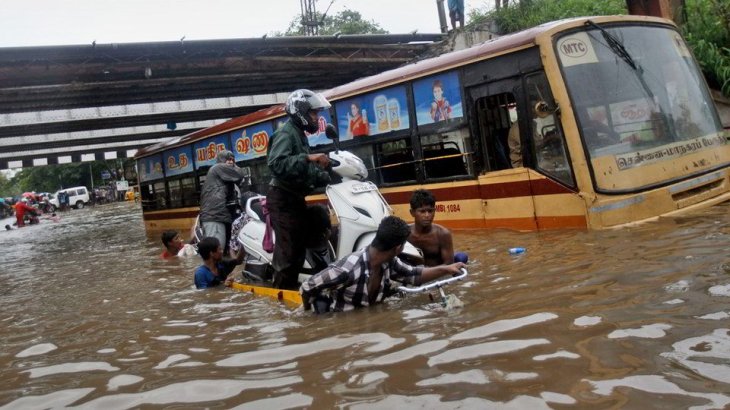India Develops A Platform To Identify Fake News About Disasters
Shakti - Nov 24, 2018

The Indian Institute of Technology recently reported its solution for detecting fake news about the disasters. This solution can quickly help the victims.
- Japan Marks 10 Years Since The Fukushima Disaster Killing 18,500 People
- Top 14 Of The Worst Industrial Disasters In The World
- IIT Mandi Researchers Develop Road That Can Generate Electricity By Walking
According to the Indian Institute of Technology, IIT Kharagpur, there is a solution for collecting critical information on social networks by applying artificial intelligence (AI), which is actually so hard to manually handle. This method can help identify a post's authenticity and also transfer the reliable news to the aid team.
In the Chennai floods event in 2016, there was hot news saying that crocodiles ran away from their park. By applying the AI solution, IIT Kharagpur's experts could have quickly detected that's fake news, just by analyzing and mapping the news resource and the authorities in the location.

Chennai floods event in late 2015 and earlier 2016
Their solution involves using deep machine learning algorithms to identify fake news as well as give warnings to users by the time disasters attack, stated Saptarshi Ghosh, Department of Computer Science & Engineering, IIT Kharagpur, India.
According to Ghosh, the accuracy of IIT's solution is at least 90% in detecting the fake news, but it can only identify the news related to the disasters. Moreover, as few as 2% of Twitter posts are relevant to disasters and can help the victims, the other big numbers of public posts express sympathy for the victims.
As this system, whenever a post about the earthquake in Hindi is public, the program can read that post and transfer to the closet believable operators.
As in Gosh statement, developers are working on AI measurements to scan social media, grab important and actionable information during the occurrence of disasters, for example, the system will get to know what resources victims need, their availability and trapped victims.
The IIT's experts tested their solution on Twitter and WhatsApp platforms during the Nepal earthquake event in 2015 and Chennai floods event in 2016. The budget for this project was contributed by the IIT Kharagpur’s Institute Scheme for Innovative Research and Development grant, Media Labs Asia and Department of Electronics and Information Technology, and Microsoft Research India and ITRA.
The Indian Institute of Technology Kharagpur collaborates with the Qatar Computing Research Institute (QCRI) to send the proposal to Microsoft Research India. He said that if Microsoft approves of the submission, they will work with QCRI and Microsoft in developing the systems to support rescue after disasters.
Developing web-based systems is the next phase the institute will carry out with the aim at rescue operations. Gosh explained that the upcoming systems will make use of their algorithms to conduct certain tasks such as detecting, collecting and summarising actionable data.
Officers in the control room use this platform to update the needed resources and the location of the disaster to coordinate with the aid team. The aid team uses it to update for the location of the disaster victims to come for help.
Both IIT Kharagpur and the Centre for Urban Science & Engineering at IIT Bombay submitted their project proposal to the Indian Department of Science and Technology.
Ghosh also claimed that within the project's framework, the team wants to pay extra attention to dealing with emergencies in urban regions.
Featured Stories

Features - Jul 01, 2025
What Are The Fastest Passenger Vehicles Ever Created?

Features - Jun 25, 2025
Japan Hydrogen Breakthrough: Scientists Crack the Clean Energy Code with...

ICT News - Jun 25, 2025
AI Intimidation Tactics: CEOs Turn Flawed Technology Into Employee Fear Machine

Review - Jun 25, 2025
Windows 11 Problems: Is Microsoft's "Best" OS Actually Getting Worse?

Features - Jun 22, 2025
Telegram Founder Pavel Durov Plans to Split $14 Billion Fortune Among 106 Children

ICT News - Jun 22, 2025
Neuralink Telepathy Chip Enables Quadriplegic Rob Greiner to Control Games with...

Features - Jun 21, 2025
This Over $100 Bottle Has Nothing But Fresh Air Inside

Features - Jun 18, 2025
Best Mobile VPN Apps for Gaming 2025: Complete Guide

Features - Jun 18, 2025
A Math Formula Tells Us How Long Everything Will Live

Features - Jun 16, 2025

Comments
Sort by Newest | Popular